By Marilyn McMahon News–Press Staff Writer
Local Art Conservator Restores Paintings in Santa Barbara
and Around the World
The call came on a Tuesday. Could Scott M. Haskins fly to London to offer his expert opinion on whether a mural should be saved in a building that was about to be demolished?
“I left Santa Barbara the next day, met with the construction people in London on Thursday, had the mural removed by Saturday, and demolition in the building began on Monday,” said Mr. Haskins. The mural, which is 6 feet tall and 20 feet wide on canvas, is now rolled up in a vertical column at the Fine Art Conservation Laboratories, where Mr. Haskins is director and chief conservator. FACL specializes in conservation of easel paintings, murals, works of art on paper and period frames.
“The mural was originally done for the 1964 Worlds Fair in New York City, and afterward it ended up in London. There is some flaking, and after I stabilize it, clean the front and back, and varnish it, I’ll prepare it for mounting in a new building in Rexburg, Idaho,” said Mr. Haskins during an interview at the unassuming facility on a one-block street near Santa Barbara High School.
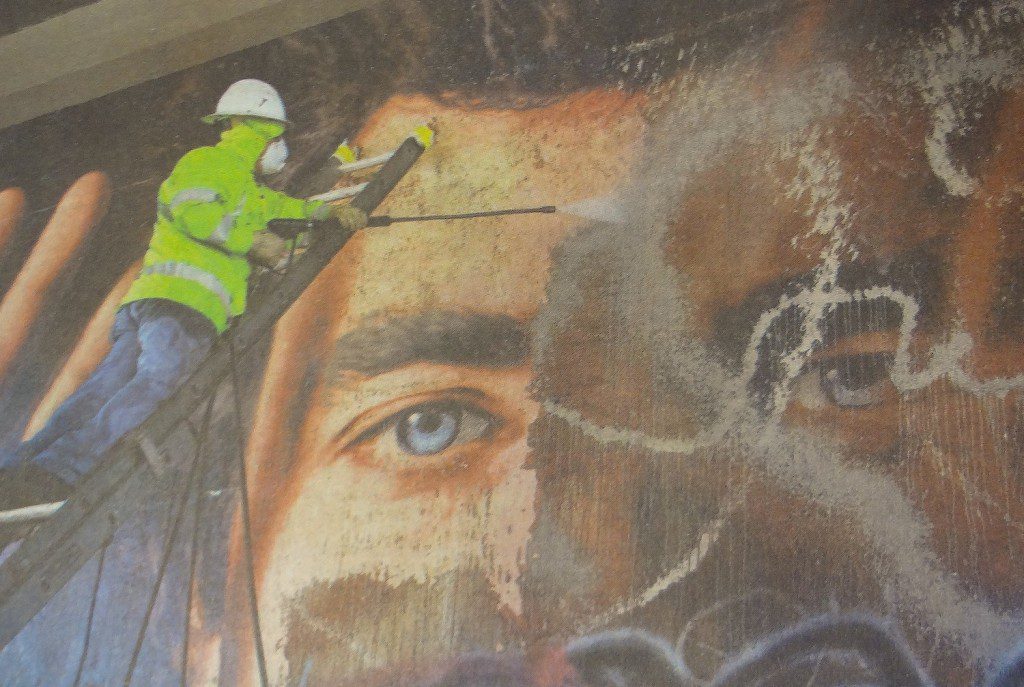 Scott Haskins is an art conservator who works on projects in his Santa Barbara laboratory and around the world. Above, a mural on Los Angeles freeway gets a scrubbing from Mr. Haskins. At top, Mr. Haskins varnishes a painting at Biola University in La Mirada. At right, at his headquarters in Santa Barbara.
Scott Haskins is an art conservator who works on projects in his Santa Barbara laboratory and around the world. Above, a mural on Los Angeles freeway gets a scrubbing from Mr. Haskins. At top, Mr. Haskins varnishes a painting at Biola University in La Mirada. At right, at his headquarters in Santa Barbara.
Projects such as these are all in a day’s work for the sandy- haired expert who performs services for clients throughout the country and world. He has just returned from a two-week project in Italy, where his passion for art conservation began in 1975 while studying for a master’s degree at a three-year painting conservation program at the Italian government run center, ENAIP in Botticino (Brescia).
“The first week I was there, I was on scaffolding working on a mural dated 1365. It was in a monastery that was built in the year 900. I was 23 years old and thought I was the luckiest guy in the world,” said the 59 year old native of Whittier.
A year or so earlier, he was a student at Brigham Young University in Provo, Utah, when an art history professor suggested he consider art conservation as a career. “I had no idea what it was, but it turned out to be the application of two interests I had since I was a child – art and science – to preserve and restore art,” said Mr. Haskins, who did eight months of post-graduate work in northern Italy after earning his master’s degree in 1978.
That same year, he was offered a faculty position at BYU to start a laboratory that would provide conservation services for the university’s art collection and the historical collection of the Church of Jesus Christ and Latter-day Saints.
“Although it was an exciting job, I left BYU in 1984 to come to Santa Barbara when a group of private investors asked me to set up a conservation lab that would attract business nationwide. It was on West Gutierrez Street until 1986 when it shut down because one of the invertors went bankrupt and everything (business’) associated with him was shut down,” Mr. Haskins said.
Rather than accept offers from the Los Angeles Museum of Art and National Galleries of Art in Australia and New Zealand, he established Fine Art Conservation Laboratories (aka FACL, Inc.) in 1986 in the same location where it is today. “I opted to stay in Santa Barbara because I was married and had four children. They were in school, and we all liked Santa Barbara,” said Mr. Haskins, whose two daughters work with him at the laboratory. Virginia Panizzon, 35 is the head conservator and Francesca Ruggeri, 31, is the office manager. He also has two sons and three stepsons, whose mother is his wife, Diana Saavedra Haskins. The blended family includes eight grand children.
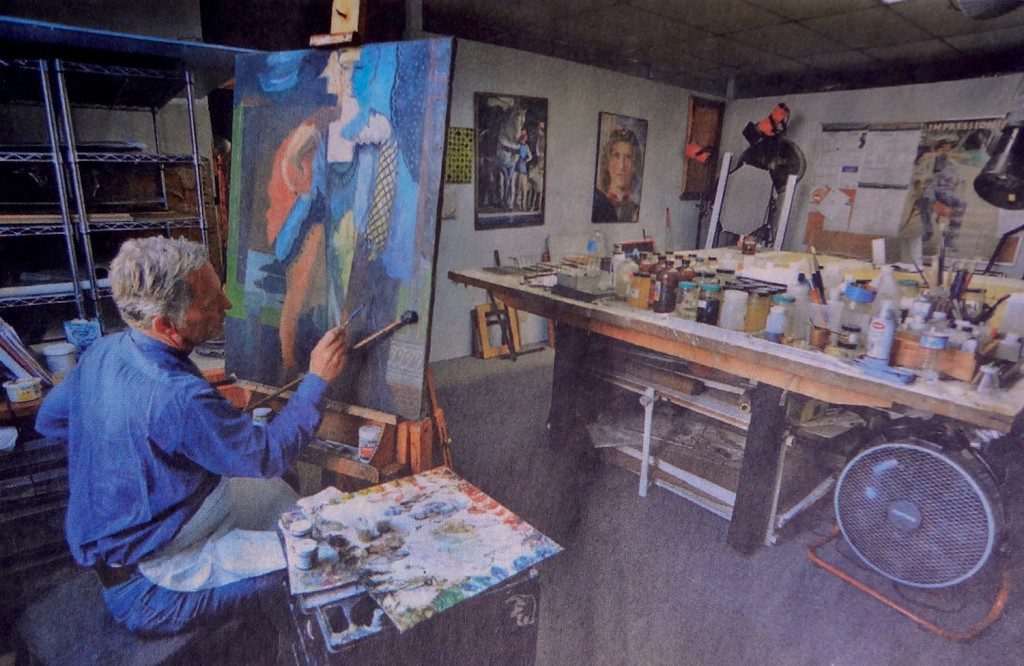 Mr. Scott Haskins works on a painting at his Fine Art Conservation Laboratories near Santa Barbara High School.
Mr. Scott Haskins works on a painting at his Fine Art Conservation Laboratories near Santa Barbara High School.
When Mr. Haskins, who lives in Goleta, is not working on international projects, he spends his time at the local lab, working on “movable artwork” that is sent from all over the world. The mention of old masters reminded Mr. Haskins of a funny experience that he thinks about every time he looks at a small icon that hangs just outside his office door. The 12-by-14 inch oil on wood panel is a picture of Christ with two cherubs. “I got a call from a man in Las Vegas who said he had a priceless Russian Renaissance icon that he wanted me to evaluate. I told him I would charge him $200 to look at it. Several weeks later, a white Roll-Royce pulled up to the front door, and a uniformed chauffeur stepped out, and came into the lab, presented me with a package and left, not saying a word.
“When I opened the package, it was the icon, which I saw immediately was not Russian. It was Italian. It was not from the Renaissance. The date was about 1850 and it was not priceless. It was worth about $200.” After confirming his opinion with another art dealer, Mr. Haskins called the man with his findings. He was furious and refused to pay me my fee. Finally after my repeated calls, he told me to keep the painting but warned me, “ If I find you have sold it at auction for $1 million, you’re a dead man.” “ He was serious, but I wasn’t worried” said Mr. Haskins.
However, the story didn’t end there. Three weeks later, he got a call from the man’s ex-wife. “She wanted to hear the whole story and then began laughing hysterically. She told me that during their bitter divorce case, they had spent over $100,000 fighting over their painting, and she had lost the fight. Hearing that it had little value was sweet vindication for her. Between peals of laughter, she kept telling me, “ I love you, I love you,” said Mr. Haskins, chuckling. If you want to hear Mr. Haskins tell the story himself, go on YouTube and search for “Fight Over Art Assets – A Priceless Renaissance Russian Icon.”
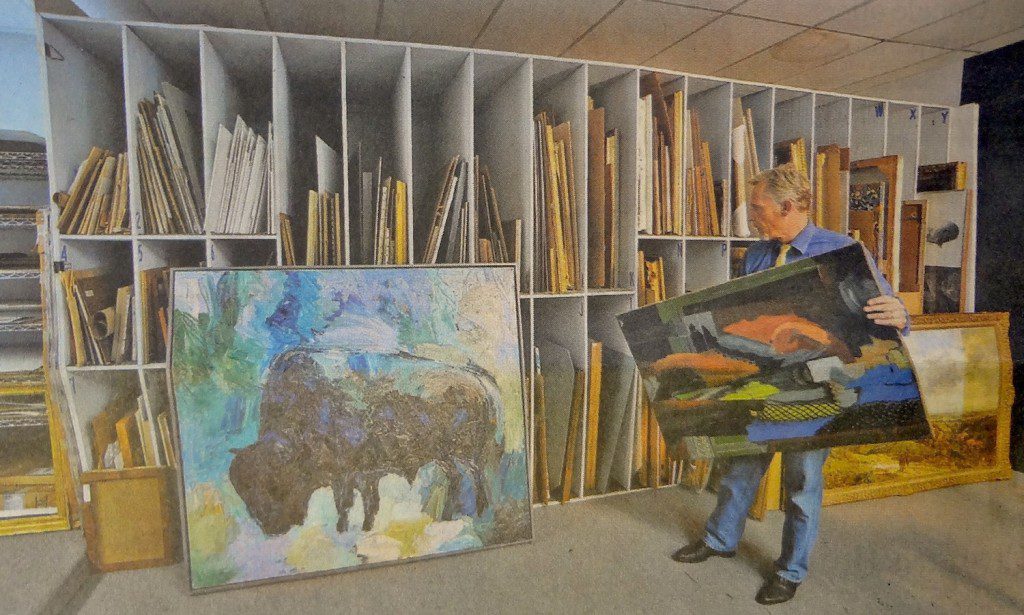 Most of the artwork FACL works on comes from California and most of those are early CA paintings that were painted between 1875 and 1940
Most of the artwork FACL works on comes from California and most of those are early CA paintings that were painted between 1875 and 1940
Before accepting a piece to restore, Mr. Haskins determines the needs of the client and the needs of the painting… sometimes, they are not the same. “A client may just want a quick surface clean and varnish but the painting may be flaking and need other important preservation treatments,” he explained. “For instance, we don’t patch rips in paintings.” To see his short video on why, go to YouTube and search for “How To Fix A Ripped Canvas” by bestartdoc. “After this initial evaluation, I discuss options and estimates with the client,” said Mr. Haskins, whose minimum fee is $250.
His laboratory, which covers 2,400 square feet, is equipped with an 8 x 12 foot vacuum hot table, a low-pressure suction tabletop, polarizing microscope and a booth to spray varnish. “We use the microscope to identify fake signatures, pigments and painting structure,” explained Mr. Haskins during a tour of the facility. “The hot table is used to relax cracking in a painting, and the suction table pulls stains from artwork.” A large spray booth is set up to varnish oils and acrylics, the final step in the process and one that has been done for thousands of years according to Mr. Haskins, who also serves as an expert witness when there is litigation involving art-related issues.
The most expensive assignment on which he has worked so far was the Fair Park Mural Conservation Project in Dallas.“ It cost $3 million and took two years to complete,’ said Mr. Haskins, who was the chief conservator for the team of 24 professionals and technicians. The murals in Dallas, which were painted in 1936 by Italian-American artist Carlo Ciampaglia, were painted out or covered, in 1942. The rediscovery and conservation of these important works of art were undertaken by the city of Dallas as part of the historical preservation effort at Fair Park.
In Santa Barbara Mr. Haskins worked with a team of conservators, technicians and specialist to prepare the mural “Portrait of Mexico Today” by David Alfaro Siqueiros for the move from Los Angeles to Santa Barbara Museum of Art in 2002. He also helped perform the conservation work once it was installed at its new site to the right of the museum entrance. Mr. Haskins and his two- full –time art conservators, which include his daughter and Oriana Montemurro, work on 400 to 500 projects-here and away- in a year with help of interns from UCSB, Westmont College, Santa Barbra City Collage and student from abroad. “If it’s a large project, I bring in professionals from other parts of the US and the world – Italy, Germany, France, etcetera,” he said.
The 1994 earthquake in Northridge, which caused major damage, inspired Mr. Haskins to add another dimension to his career-using his expertise to educate people about what they can do to save their valuable possessions when there is a disaster or an emergency.
“After an earthquake, I got a call from a contact in the area. He said, ”Quick, I need you to write a pamphlet on how to respond after an earthquake to save your collectibles,” recalled Mr. Haskins. “It took me an afternoon to write, and over 500,000 copies of the the booklet were distributed by the human resources departments at Bank of America Corp.
The next year, he took more time to write “How to Save Your Stuff From a Disaster.” The soft cover, self-published book and the e-book version cost $19.95 and are available at the website, www.saveyourstuff.com. Chapters include “Photographs and Negatives,” Ceramics, Glass an Other Objects,” “Rugs, Tapestries and Old Clothes” and “Sculpture and Furniture” and “Paintings,” of course. In the Appendix is information about “Suppliers of Preservation Materials,” “Insurance Claims, Be prepared” and “Emergency Phone Numbers, Quick!”
“The book is particularly relevant in Santa Barbara with its propensity for earthquakes and brush fires. I’m trying to reach out to all of the community with an important message that touches every family or person who has precious possessions or keepsakes, not only those who collect or inherit expensive art,” said Mr. Haskins, smiling as he added , “I guess I’m an author now, too.”
Did you like this article? Please give it a THUMBS UP and leave a comment
Email:
mmcmahon@newspress.com Marilyn McMahon
faclartdoc@gmail.com Scott M. Haskins
Scott Haskins and News-Press Staff writer – reporter Marilyn McMahon
Mike Eliason, News-Press photograher shooting Virginia Panizzon working on a painting on the hot table.
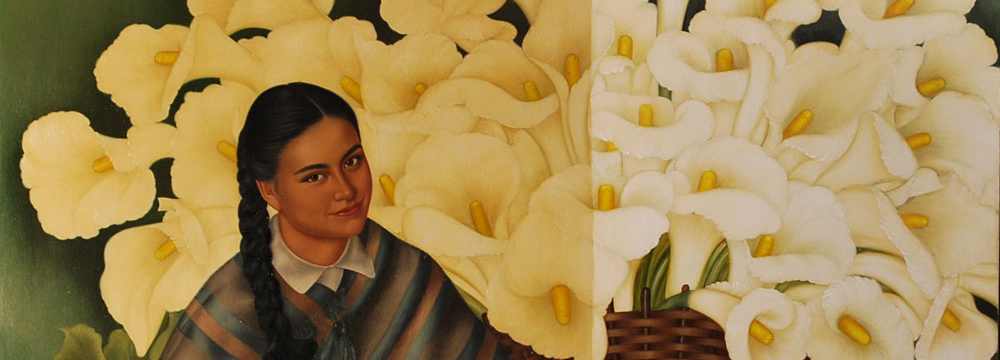
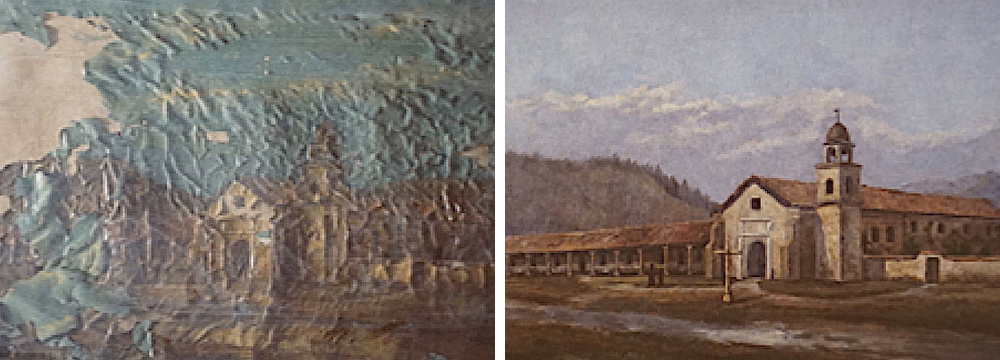
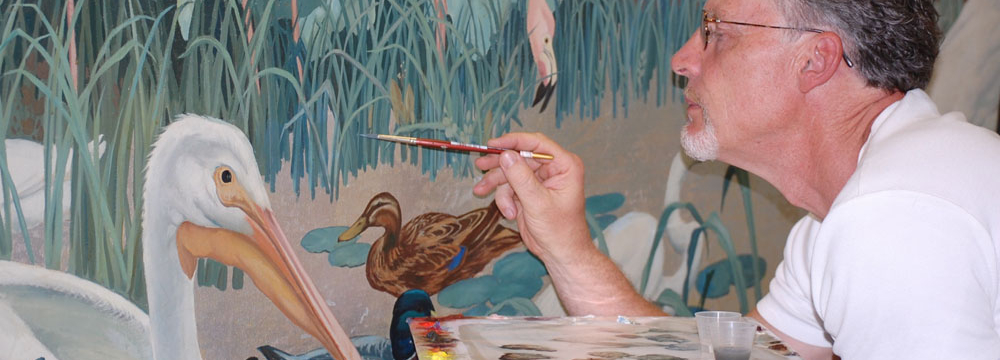
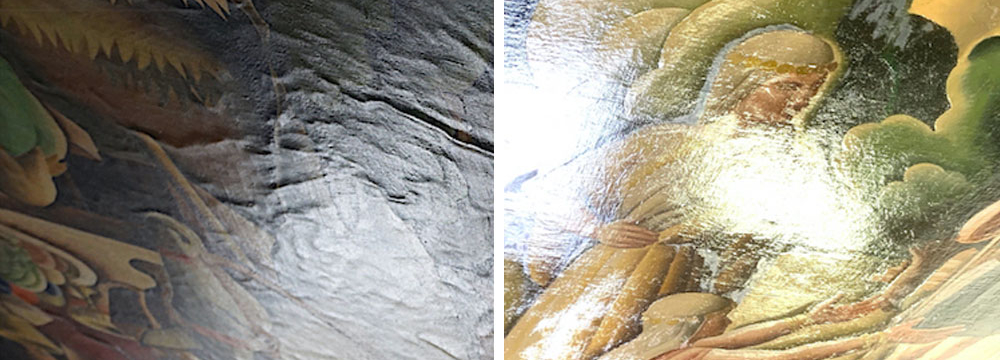
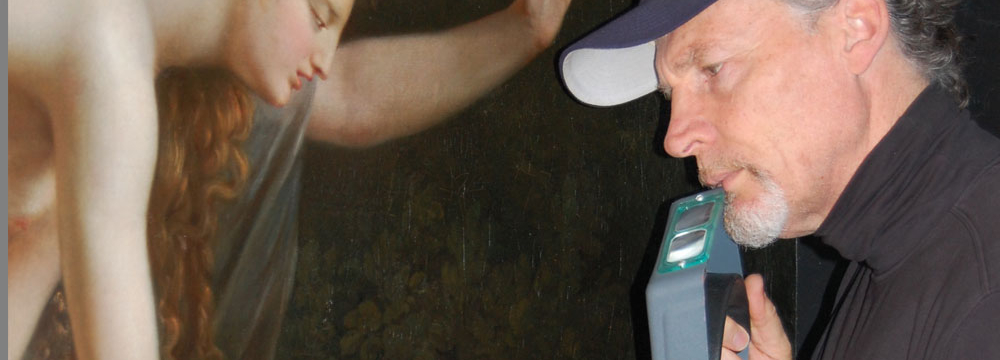
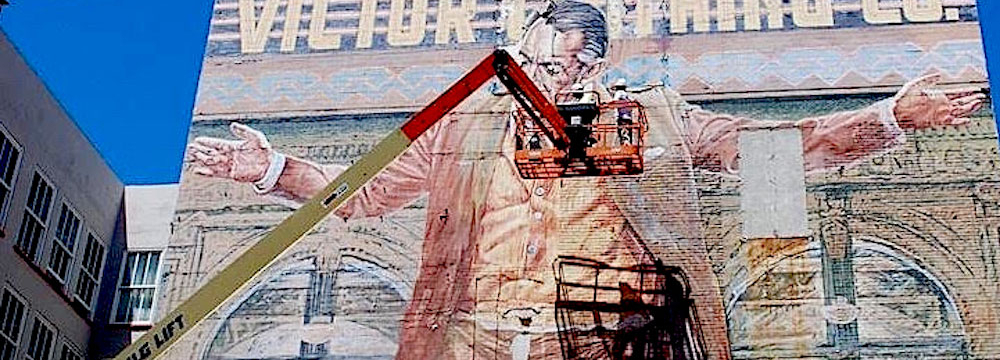
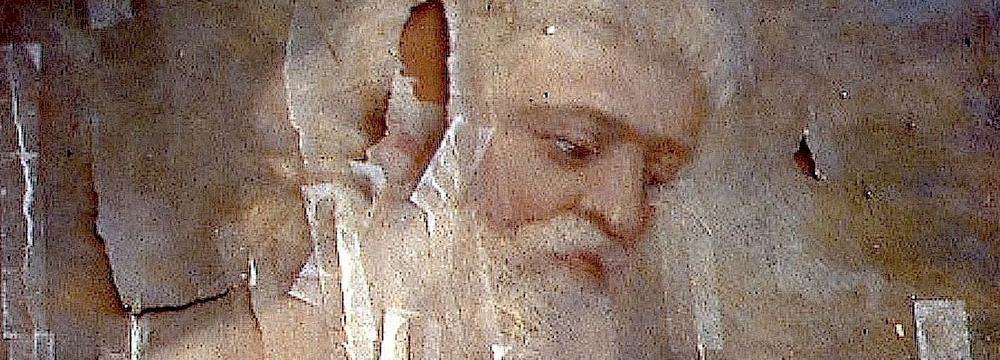
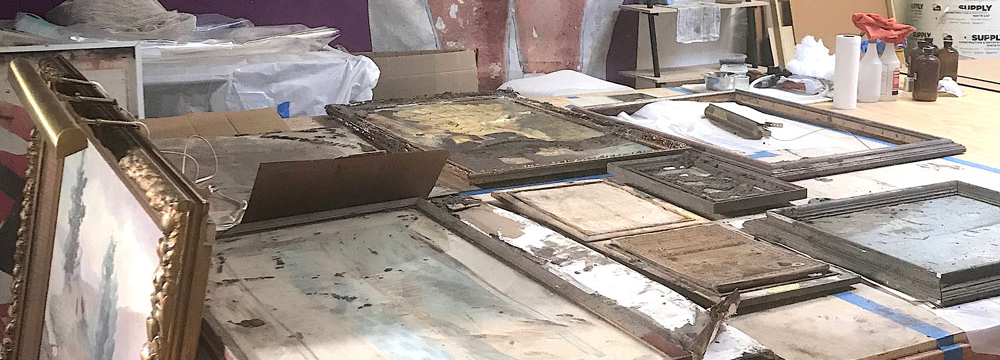
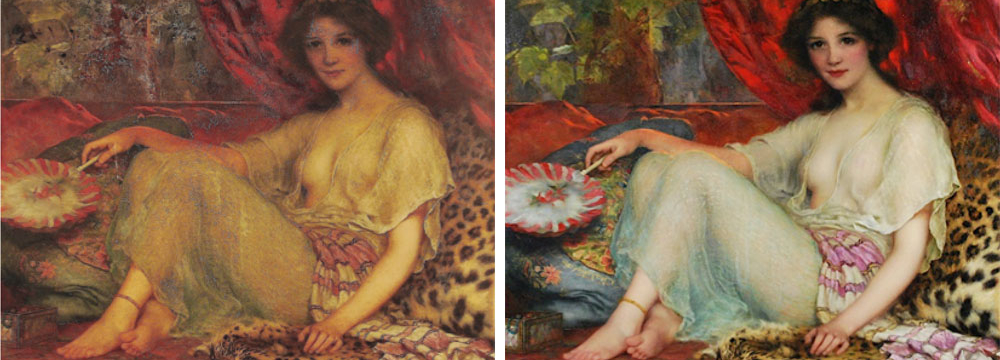
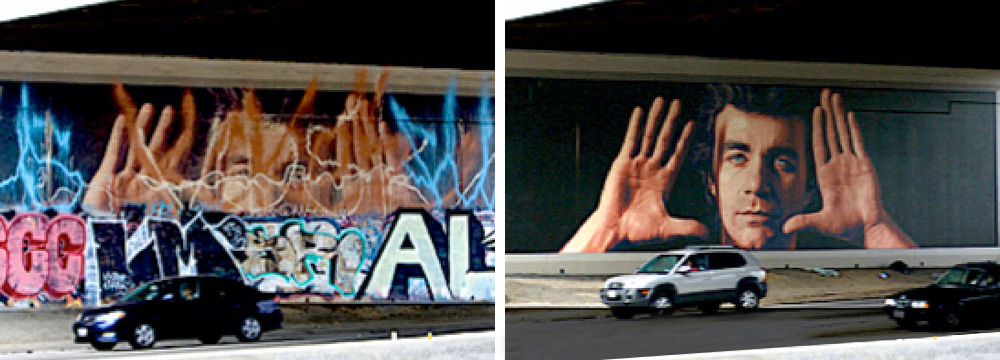

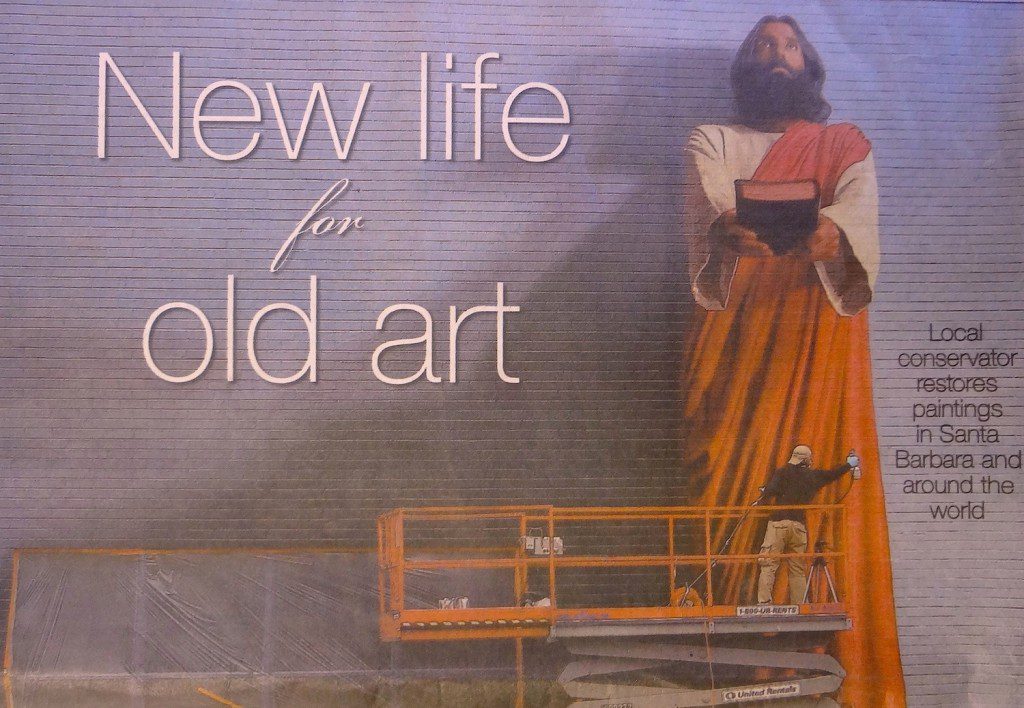

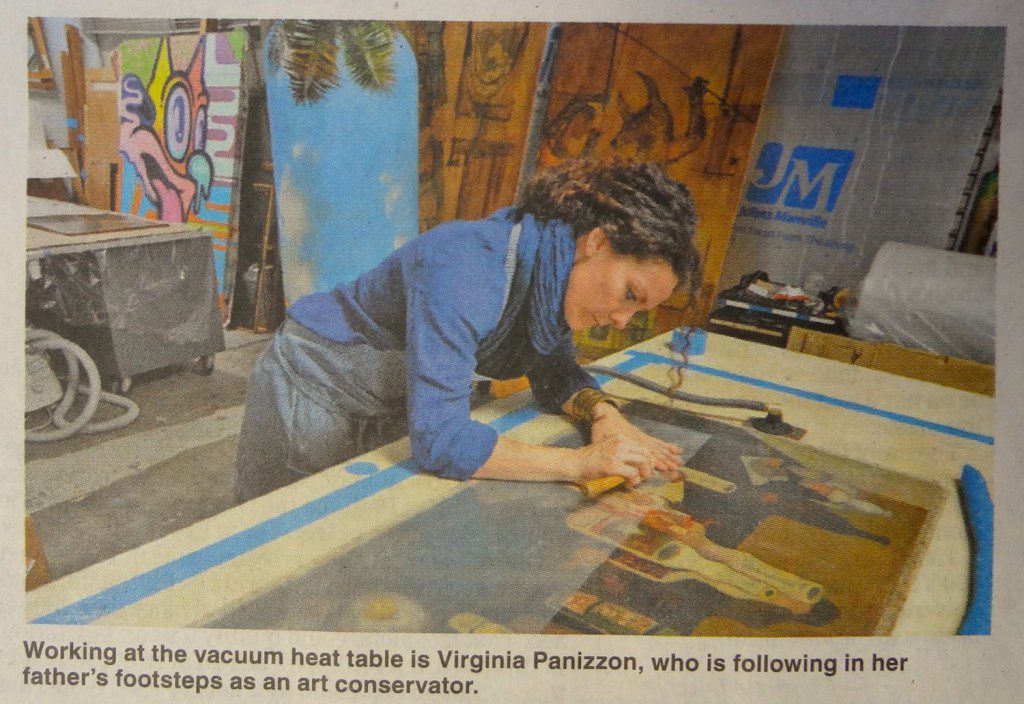
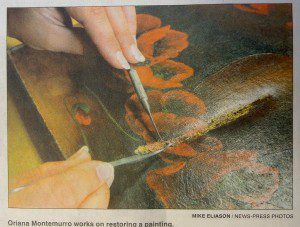
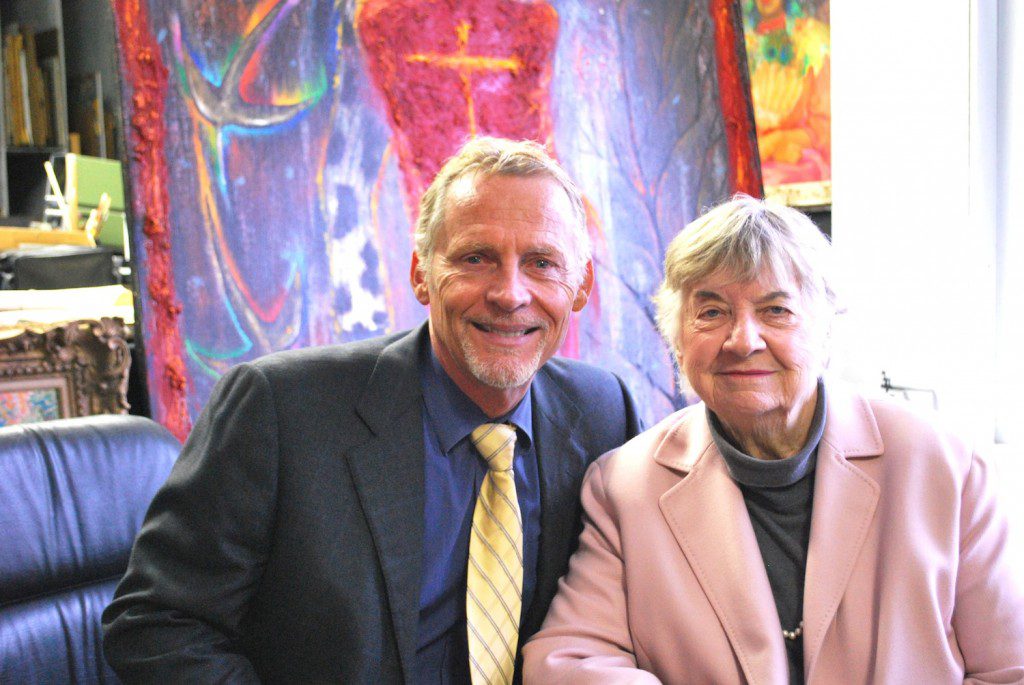
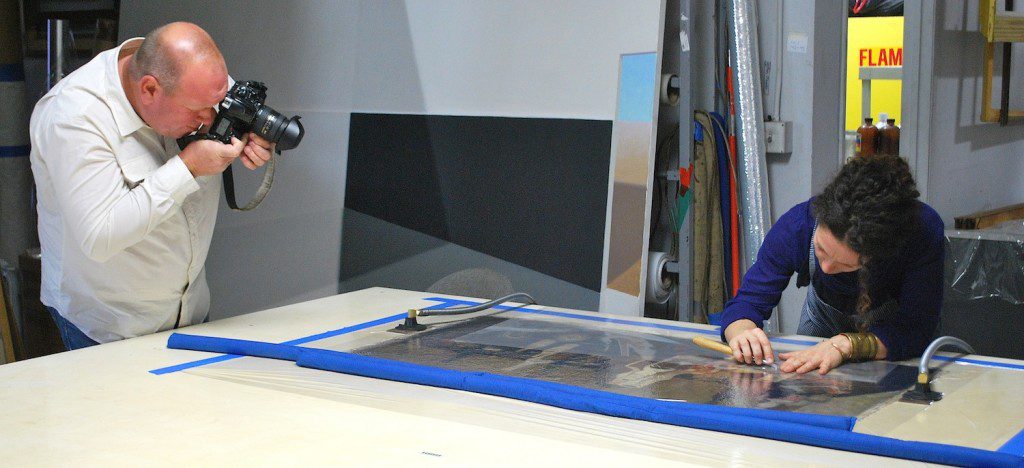
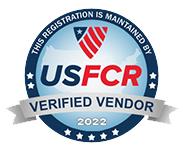
Dear Scott Haskins, I am Pascal Labreuche, a colleague and researcher. I am trying to reach you. Would you please give your email address ? Thank you in advance
Hello Pascal,
Thanks for leaving your inquiry. My email address is faclartdoc@gmail.com. My mobile phone is 805 570 4140 and office is 805 564 3438. Best wishes, Scott
We absolutely love your blog and find your post’s to be so educational and applicable to our situations as collectors. SO many suggestions result in saving money by avoiding problems. Again, awesome web log! Thanks!
Pingback: Scott Haskins, Your Preservation Coach, Featured in Major Newspaper Article - Save Your Stuff
Pingback: Protecting and Saving Your Family’s Heirlooms and Memorabilia – Save Your Stuff
Pingback: Art Conservation and “Saving Your Stuff” focus of Daughters of Utah Pioneers Annual Meeting – Save Your Stuff
Pingback: Shipping Damage of Heirlooms: Liquid Tide Detergent Disaster – Save Your Stuff
Pingback: Archival Scrapbook Copying/Duplication… why? – Save Your Stuff
Scott M. Haskins is indeed a master art conservator with tons of high level experience, specializing in the conservation and restoration of paintings. We appreciate so much his working with us. Our relationship goes back years.
Thank you Sally for your recommendation!
Pingback: How To Deal With Wood-boring Pests That Ruin Your Antiques, Artifacts and Artwork. – Save Your Stuff
I highly recommend Scott Haskins if you want a true expert to work on your art. He takes his time explaining any questions you have about the art that is presented to him. When I presented the painting that I wanted to be cleaned he recommended the steps to be taken as if it was his own. Scott Haskins was highly recommended to me by several Fine Art Galleries in the Monterey Peninsula and Santa Cruz areas.
Bonnie, Thank you for your nice comment. I was glad to help you with your authentication “project.”
Hello Mr. Haskins,
I met you a few years ago, and you did some forensics on a painting that my wife’s aunt owned. (Family got involved and the daughter ended up losing the painting.)
Anyway, I’ve since retired, moved to Colorado Springs and bought a beautiful 4k sq. ft. home with my new wife.
Still having the passion for art, I began buying paintings, and have grown to collecting specifically Southwest/California impressionist paintings. (Though I’ve acquired a few really nice French Impressionist works that looks to be by the hands of a master.) It’s been a learning curve, but I’m getting better. (3 Paul Grimms, a few William Darlings, a Paul Lauritz, a decent John M. Gamble, Hanson Puthuff, Emil Kosa Sr., and about 15 other works.)
In the process, I’ve acquired many works that could use conservation. What I was wondering is…, is there any way you can teach me online, and I would pay you. I may be willing to invest about $20k into material and equipment, and would be willing to also act as an intern/apprentice (free) once I am ready, and you needed some help in my area. I’ve done a few rip repairs and in-painting and thought I did a decent job. I don’t feel confident enough with my judgement in buying the right cleaning materials to clean paintings, other than soap and water in a few cases. (I would also want to learn how to lay down flaking paint,…but know it probably takes some expensive equipment.)
P.S. I was an A student in College, and worked in a technical field at So. Ca. Edison for 28 years.
If you have any interest in helping me, please email me.
I going ahead with this no matter what, but I’ve always believed in getting the best education possible/within reason, and have a tremendous respect for your skill.
I do hope you consider it.
Sincerely, Charles
Thank you Charles for the compliments and respect. Art conservation is a profession that requires advanced learning (or at least understanding) on a science level and then craftsmanship exactness much like a surgeon, where much harm can be done if not aware and careful. The masters degree programs are 3 years in duration with post grad work adding 5 ore years to the process. All this is full time commitment. Another route more historical is the apprenticeship process but, of course, the trouble is finding someone who will look over your shoulder, full time, as you work for about an 8 year period. The quality of the teacher gets transferred to the student so, generally, more mistakes are usually passed instead of skills. You can imagine the reticence of teaching someone, no matter how well intentioned, enough to make them dangerous, when the purpose of our profession is to protect and preserve art. Some people are willing to go ahead and learn on their own… which means they have failed the 1st lesson, never do any harm and respect religiously all artwork… because with this method, “Damned the torpedoes, full speed ahead” is not an appropriate mantra for art conservation.
You might check with the art conservators in your area to see what opportunities exist.
Respectfully,
Scott M. Haskins
Dear Scott. I have a couple of questions for you. I was a BFA graduate of BYU in the early ’70’s. I was wondering if the art historian at BYU that directed you to your restoration career was Wesley Burnside? I worked in the art collections area with artist Gary Ernest Smith. It is interesting how paths crow. The second question is I show my work in the Authentique Gallery in St. George Utah. During and outdoor spring show a new painting was hit with an easel when a gust of wind knocked it over, the painting is of Christ and the tear is on his chest. I am confident about doing the color work on the face, my question is the canvas was slightly stretched and torn through and frayed a bit. What would be the best adhesive to use to rejoin the fibers before repainting the front? I do a great deal f wood graining and marbling and all sorts of decorative painting, murals, gilding and Venetian plaster., but after seeing your work I wish I had gone into conservation. Thanks so much for your help 435 773 3414 or 435 773 3689
Hi my name is Olivie and I just wanted to drop you a quick note here instead of calling you. I discovered your blog post telling about your cool newspaper article and loved it. I’ve got some artwork that I would like to look at with you. I assume this is something you do? I live in the West LA area.
Hi Olivie, I’m looking forward to meeting with you. Please give us a call to set up a time 805 564 3438 btw… we will not charge you for the visit.
I have three painted murals, commissioned by me in 1977 by a local painter. Originally, these paintings graced the walls of a Mexican restaurant. The restaurant closed and the murals, on canvas, were stored. Damaged, torn and aged, my now sentimental murals are in a sad state. These paintings were created by a local artist who is no longer living. I would like to save these paintings, if financially reasonable. I paid approximately $3500 each. I would like to forward digital photos of each but, I am unable to attach my photos to this reply. I hope that you will be able to suggest a solution for me. I live in the East Bay of the San Francisco Bay Area.
Marco, Give me a call so we can discuss the options. 805 564 3438
All my best
Scott
Great post and coverage. We found out about Scott Haskins and FACL through an enthusiastic recommendation by Karges Fine Art in Los Angeles and Carmel, CA. FACL does top quality work.
Thanks Nick. We’ve enjoyed working with you too and appreciate your confidence in us to work with us even over a long distance.
Preserve a painting and you preserve history!
Nice write up and very interesting… but your reputation precedes you.
Pingback: William Sargent Kendall’s “The Artist’s Wife and Daughters” in the lab for Art Conservation Treatments | Fine Art Conservation Laboratories (FACL, Inc.)
I liked up your write up and thanks for the good info. Your job sounds really interesting and you sound like THE expert.
A wonderfully written press release, thank you for sharing.
My friend told me about you and led me to this page. I am quite impressed. Thanks for all of the great work you do!
One of the best articles I have read on someone in your field. I work in museums and as a tour guide expert on art history for museum travel groups and its always wonderful to connect with experts like you who have an interesting background and can explain the cool things we look at in museums and cultural centers. Have you ever been an art expert on a cruise?
Hi Rachael and thanks for your comment. While I have not had the time or thought the compensation was adequate to do the cruise circuit, as I visit locations on my travels and meet with other professionals (http://www.youtube.com/watch?v=b-hKGLzT_u0) on special exhibit visits, invariably I get groups that tag along and eaves drop… then that turns into hosting the tour sometimes. Its fun. I enjoy discussing the inside details of our profession with art lovers.
Great article and you do great work and teach people very important things.
Scott I have some projects for you soon, I will be in touch. You are the only true expert who I would trust.
Scott,
Wonderful article and most interesting about your background. We at our high school have some WPA murals that need to be looked at. Would you be wiling to come over and give us an estimate for any work they might need?
Gloria
Gloria, yes, of course I would love to come over and meet with you and inspect your murals. Please give me a call at 805 564 3438 or email me at faclartdoc@gmail.com
As a follow up everyone, I went over to the high school, met with Gloria, had a really nice visit and I will submit a proposal and estimate that she will present to her board at the end of Aug (at no cost). We are willing to do the work on a weekend and work around their logistic issues (of course).
I love this article and I absolutely love the work you do. You are keeping history alive which is what is needed.
Congratulations on the article and coverage. Sounds like you deserve the good recognition. Interesting profession. While I never thought of it before, what you do is really a necessity in society if we want to preserve our past. So what you do it really a very socially conscious work.
Thanks for the comment Wendy. Yes, I think so too, that our work is very socially conscious. I love preserving the past for future generations.
Great article and book! Keep up the great work Scott.
Scott, I have watched a lot of your videos. Very impressive.
One of the best written books I have ever read. Very informative too!
Remarkable article or should I say how surprised I was that was so interesting! Thanks for writing you remarkable book which, I guess is pretty much the only book out there to help collectors know what to do? One that has taught me so much. You never know when a disaster could strike so you need to learn to prepare yourself.
Thanks Sandy for the comment and the compliments. My book is the only preservation how-to book that is in plain english. All the other books out there are written by curators or art conservators of institutions that speak to you in museumese or conservationese. A great amount of time and effort was made to make the info understandable and practical for the “regular” person.
Hi Scott, I just finished reading your book. I will be definitely be taking better care of my collectibles than I have before. Thank you.
Wanda, you will enjoy Youtube Channel “Preservationcoach” where I have posted many How-To videos. BE sure to subscribe to the channel so you get updates when I add a new video (I have three in the making).
Scott brings a lot of excellent points in his book about caring for your collectibles and this was a great article too.
Thanks Maria. You will enjoy Youtube Channel “Preservationcoach” where I have posted many How-To videos. Be sure to subscribe to the channel so you get updates when I add a new video (I have three in the making). Also, I will be speaking at the Layton, UT, DUP Company meeting on Oct. and you could see me there. By the way, you can got to http://www.PioneerArtRestoration.com to see posting of projects. I will be adding many new postings soon.
This is a wonderful piece of work and great writing, and book Scott.
Great blog and excellent book!
Dang! Great write up. Nice PR job…. nice blog!
What a true eye opener. Thank you Scott.
It is disturbing how many of us do not care for our precious belongings which can easily be destroyed. Scott, I appreciate you bringing shedding light on this. We need to treat them like we would treat our children and pets. Cherish them.
Scott, thank you for all you do! I mean that. I have a friend that interned with you and she said you are well known and connect with a lot of people and that you work on a lot of important historic preservation projects. Your work seems like a socially conscious, important influence within our communities.
Scott, the article was very informative. You are the best artist/art conservator around 🙂
Thanks Denise for the compliment but I am not an artist. I don’t paint or do anything creative when it comes to this work in art conservation. Those in my profession don’t even like the term “art restorer” as it alludes to a non specialized fixer upper for art and not someone who has a work ethic, a professional standards of practice and is interested in why things fall apart. The term we embrace is ‘art conservator”, “painting conservator” or “fine art conservator.”
A very well written article and I just purchased your book! Looking forward to reading it and learning a lot from it.
If you live in an earthquake zone, or an area where bush fires happen you absolutely need to protect pieces of your history. Thanks so much for bringing us awareness about this.
Pingback: Chris
great, sei sempre un grande!!! ciao
Pingback: Santa Barbara News Press
Loved the article!!! Thank you!!!
Great article! FACL does a outstanding job for us and they are all great to work with.
A great article, for a great artist, and for a great man!
Great article. And thanks for the update…everyone’s excited down here about our project together.
Thanks Scott.
David
Great article!
Gordon